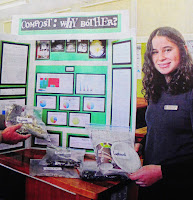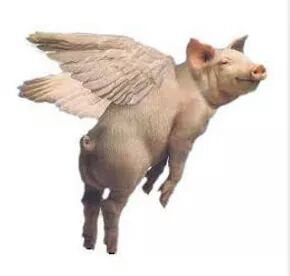Its been a while since I've posted on my blog but I thought the below was worth sharing - Bruce
Teaching
the Best Practice Way
By Harvey
Daniels and Marilyn Bizar.
A valuable book for teachers wanting
to develop a modern learning environment.
The other day I heard an interview on National
Radio expressing the sad fact that a great number of students leave school with
no idea about what they want to do.
It made me
wonder about what’s the point of school? For me, school ought to be premised on
developing the gifts, talents and interests of all students.
Sadly,
primary education is still centred around literacy and numeracy, all too often taught
as self-contained subjects, and most secondary schools are still based on
fragmented subject centred timetables. No wonder so many students leave without
know the direction they want to head when they leave school!
With this in mind I thought it might be useful
to share the Seven Best Practices presented in the book ‘Teaching as Best
Practice’. by Daniels and Bizar (Stenhouse Publishers USA).
The books great
strength is that it combines a progressive education philosophy (in line with
the intent of the NZC) with practical examples of the philosophy in action
across all levels of school. The book relates to the ideas of such educators as
John Dewey, Jean Piaget, James Beane, William Glasser, Howard Gardner etc. and
the examples are based on experiential hands on learning fuelled by the passion
of extraordinary teachers. The book is antidote to the standards movement and
hyper accountability of past decades.
The Seven
Best Practices.
1 Reading as
thinking.
Reading is seen as transcending debates about
phonics and is more about reading as thinking embedded in the context of broad
and interesting integrative units where students are continually representing
to learn in writing, art, and performance.
Since reading is thinking students
need to be provided with rich text worth thinking about, and strategies to help
them think. Proficient readers are seen as ‘co-creators of meaning’ Context is
everything; it’s about getting students ‘to think like historians,
mathematicians, and scientists.
Practical classroom examples in the book clarify the approach.
2
Representing to Learn.
This method
is based on the premise that humankind has always had an impulse to represent
experience and that this goes beyond using words including strategies that are
commonly classified as art, drama, dance and music, and today multimedia
experiences.
There are a range of genres to explore and opportunities to extend
and amplify a full range of intelligences (as researched by Howard Gardner). A
range of practical examples are covered in the book.
3 Small group Activities.
Students
need to be given opportunities to practice democracy and work together to solve
problems (the writings of John Dewey). Many structures are provided, and
practical classroom examples given to ensure groups work productively.
 Group
tasks must be ‘have enough inherent structures to operate automatically, to
remain engaged, on task and relevant’.
Group
tasks must be ‘have enough inherent structures to operate automatically, to
remain engaged, on task and relevant’.
4 Classroom
Workshop.
The authors
see the classroom as a workshop a useful metaphor or ‘working laboratories or
studios, where genuine knowledge is created, real products are made. and
authentic inquiry is pursued.’
In the
workshop, learning laboratory classroom students choose individual or small
group topics for investigation, inquiry, and research using long chunks of
classroom time to do this.
Teachers take on new roles modelling thinking,
conferencing, offering well timed compact mini lessons and providing help as
required. In the early days of workshopping teachers keep the time short
lengthened as students become more independent. In workshops students learn to
act, plan and question like a scientist. Classroom examples clarify the
approach.
5 Authentic
Experiences.
For many
students schools need to get real and many people from John Dewey onwards have
argued for school to be more lifelike, more genuine, more authentic.
Just as in
real life these experiences are inherently multi-disciplinary and messy
problems; these problems need to be identified, complexity needs to be faced,
and solutions found. Inquiry into authentic questions need to be generated from
student experiences. Students need to become researchers, gathering data,
asking questions, conducting experiments, recording information and discovering
answers.
This kind of
inquiry becomes possible when the conditions that support Best Practices are in
place; when the classroom is a community with students eager to take
responsibly for hands on experiential learning and with opportunities to
express what they are thinking, and able
to use technology to advance their inquiries.
The authors believe ‘that technology can leverage some
of the best teaching if used widely ‘and that it can ‘play a lead or supporting
role’ once the appropriate pedagogy is in place.
Once again a range of practical examples are
provided.
6 Reflective
Assessment.
Students
need to be helped become self-monitoring, self-regulating, able to be in control
of their own learning, able to set ambitious goals, keep their own records,
adjust their efforts, make good decisions and grow by healthy and measured
feedback.
This is in
contrast to the toxic current accountability movement which the authors state
simply correlates to student socioeconomic status of students, is inconsistent
with what is known about how students learn and distort teaching often
resulting in streaming, tracking and ability group segregation. A range of
practical alternatives are provided.
7
Integrative Units
The writers
save the best for last.
The last best practice blends all the other six methods
into days or weeks of rich, cross disciplinary investigations driven by student
interest and scaffolded by teachers who model, coach, and manage the inquiry
process.
With integrative units teachers step emphatically out of single
subject instruction and
lead their students into inquiries as complex and
multi-disciplinary as the real issues grown-ups face as workers, parents and
citizens.
Teachers
believe that students can learn subject matter (including basic skills) amid
holistic, integrated experiences. This approach doesn’t mean that traditional
subjects are disrespected or abandoned. On the contrary, as James Beane writes,
‘the disciplines of knowledge are useful and necessary allies of curriculum
integration with knowledge being called upon to support student investigations
as required.
Conclusion.
Nome of the
above will be new to progressive primary teachers and those secondary teachers
busy transforming their schools, often in new purpose built environments.
For many the book
will be a practical inspiration to confirm or transform their teaching.
If widely
applied in our school system students will leave with their talents, interests
and passion tapped and amplified, equipped with appropriate learning skills,
and will not leave schools not knowing what to do with their future – they will
have seen the point of their schooling.

















































